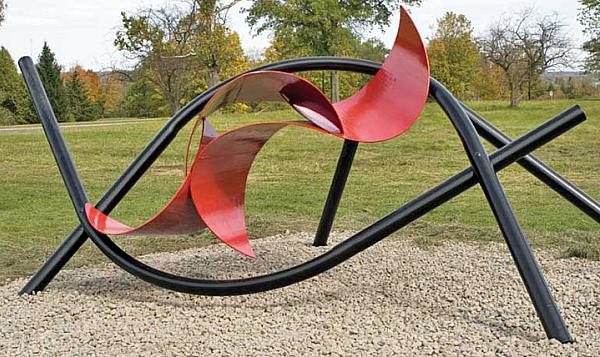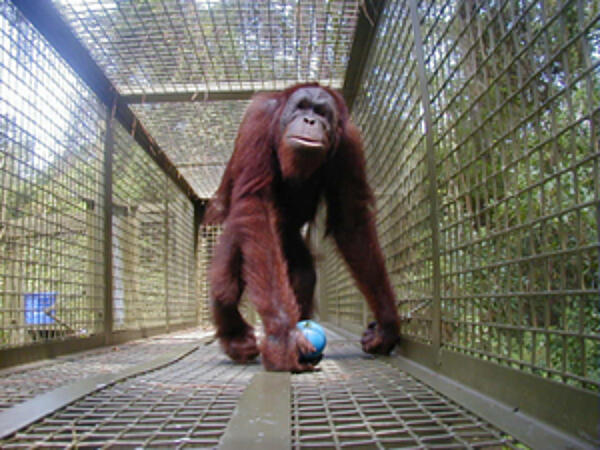Duplex Systems: Paint or Powder Coating Over HDG
*Updated in 2025
Why are duplex systems specified? What special procedures or specs should be followed to ensure the paint or powder coating adheres to the galvanized steel surface?
Successful duplex systems originate with good communication with the galvanizer and coating manufacturer, as well as appropriate surface preparation and coating selection. These factors critically contribute to the creation of a long-lasting, effective duplex system. For more detailed guidance, refer to ASTM D6386, ASTM D7803, and the American Galvanizers Association (AGA).
Duplex Systems: Paint or Powder Coating over HDG
Duplex Systems combine the superior protection of galvanized steel with the additional benefits of another corrosion protection system, such as powder coating or paint, to extend the corrosion protection of a product even further. The synergistic effect of using two coatings extends the service life for unparalleled corrosion protection, while the metallurgically-bonded galvanized coating serves as an ideal primer to provide an impervious barrier for the base steel.

When paint/powder coating and galvanized steel are used together, the corrosion protection is superior to either protection system used alone and can last from 1.5 to 2.3 times the combined lifetimes of both systems. In other words, if you had a paint system that lasts 10 years and a hot-dip galvanized system expected to last 70 years, the duplex system would last 120-184 years if you just let the paint and galvanizing wear away naturally.
Why Use a Duplex System?
There are several reasons for using a duplex system, ranging from financial benefits to safety. Each project may have unique reasons for utilizing a duplex system, but some common reasons include:
Extended Corrosion Resistance: When paint/powder coating and galvanized steel are used together, the corrosion protection is superior to either protection system used alone and can last from 1.5 to 2.3 times the combined lifetimes of both systems. For further information on longevity, see Estimating Time to First Maintenance for Duplex Coating Systems.
Economic Benefits: The underlying zinc extends the life of the paint or powder coating by at least 50%, thereby decreasing the number of paint maintenance cycles needed throughout the design life and reducing overall maintenance costs. The underlying galvanized steel will remain protected by the coating until it wears away. If maintained, the coating will protect the HDG indefinitely.
Ease of Recoating: When the paint of a duplex system completely weathers, the exposed zinc coating requires minimal surface preparation when repainting.
Aesthetics: Matching colors for branding or surrounding structures.
Safety Marking: The extremely high cost to maintain a very tall structure often means galvanizing is a requirement but those same tall structures are mandated to be painted safety orange and white for high visibility to air traffic.
Color Coding: Steam, water, and other fluid piping systems are often painted in industrial facilities to distinguish them for quick repair or safety concerns.
Extend Life of Previously Galvanized Steel: Large in-place structures often cannot be regalvanized after decades of exposure and so a logical means of keeping the structure in service is to apply paint in the field for added barrier protection.
For more detailed information on the benefits of duplex systems, please see AGA publication Duplex Systems: Painting Over Hot-Dip Galvanized Steel.

Preparing Hot-Dip Galvanized Steel for Paint or Powder Coating
Proper surface preparation is crucial for achieving strong adhesion between the galvanized steel and the specified coating. While both powder coating and painting require thorough surface preparation to ensure good adhesion and long-lasting protection, there are some key differences in the steps involved.
It is important to know the initial surface condition or age of the galvanized steel that will be painted or powder coated as the age dictates the appropriate steps to prepare the HDG steel for coating application. Hot-dip galvanized steel can be divided into three categories: newly galvanized steel, partially weathered galvanized steel and fully weathered galvanized steel. Each type of galvanized steel must be prepared slightly differently because the galvanized surface has different characteristics at each stage of weathering.
The following specifications contain information regarding the preparation of hot-dip galvanized surfaces for a Duplex System based on the initial surface condition:
ASTM D6386 details recommended practices for preparing hot-dip galvanized surfaces for painting, including available practices for surface smoothing, cleaning, and profiling based on the identified initial HDG surface condition. For more information on preparing HDG for paint, see the AGA publication Preparing HDG Steel for Paint.
ASTM D7803 details recommended practices for preparing hot-dip galvanized surfaces for powder coating, including available practices for surface smoothing, cleaning, and profiling based on the identified initial HDG surface condition. However, D7803 also provides guidance on a thermal pretreatment to be performed after surface preparation which is necessary to prevent outgassing of the HDG coating during the baking step in the powder coating curing process. For more information on preparing HDG for powder coating, see the AGA publication Preparing HDG Steel for Powder Coating.
Specifying ASTM D6386 or ASTM D7803 alone does not fully define surface preparation for duplex systems. Confusion arises when the cleaning and roughening options within each standard are not clearly selected or agreed upon. To ensure best results, the paint manufacturer should be consulted when the methods from ASTM D6386 and D7803 are selected by the responsible party. For more information, see Responsibilities for Surface Preparation Prior to Painting or Powder Coating HDG. Additional guidance is available from the AGA for paint and powder coating applicators on abrasive selection to avoid damage when sweep blasting the galvanized surface: Abrasive Blast Media for Preparing HDG for Painting and Powder Coating.

Time Between Surface Preparation and Painting
Painting should take place as soon as practical after surface preparation, no matter which method is used. ASTM D6386 and ASTM D7803 describe the influence of factors related to atmospheric conditions, including humidity and temperature.
Compatibility of HDG Repair Materials
When specifying zinc-rich paint for HDG repairs at the galvanizing facility or by the painter, evaluate the material compatibility of the zinc-rich paint and the selected coating system. Additionally, consult the manufacturer's product data sheet regarding re-coating intervals. It may be practically necessary to agree on whether the galvanizer or painter should apply zinc-rich paint if the galvanizer and painter are two different parties.
© 2025 American Galvanizers Association. The material provided herein has been developed to provide accurate and authoritative information about after-fabrication hot-dip galvanized steel. This material provides general information only and is not intended as a substitute for competent professional examination and verification as to suitability and applicability. The information provided herein is not intended as a representation or warranty on the part of the AGA. Anyone making use of this information assumes all liability arising from such use.




